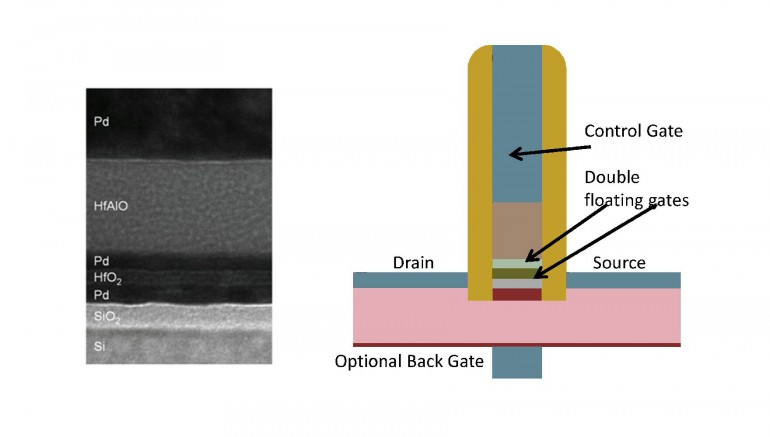A team of researchers from North Carolina State University claim to have created a memory device that could give computer users the speed advantages of DRAM system memory and the data retention capabilities of flash memory, in one unit. The new device could lead to genuine instant-on computing and machines with improved resiliency. The development may even lead to power-hungry server farms making considerable energy savings by allowing parts of the system to be shut down during periods of inactivity without fear of data loss.
The new scalable, dual-metal device is called a double floating-gate field effect transistor (FET) and is said to combine the advantages offered by two forms of computer memory currently in common usage. Nonvolatile memory, like that used in USB flash drives, allows data to be retained after the power is turned off while the volatile variety, like the memory modules slotted into a mainboard, offers faster read and write access but needs constant power for the retention of stored data.
gizmag
0
















I’m not sure this author understood this product either. As I understand it this ram only uses energy when you change something. It can hold data without consuming energy. Why or even how you could or would “turn it off” escapes me.
Oooh awesome.. maybe we can now move long-term data storage off P/SATA ports, and off the south-bridge all together, and directly be apart of system RAM.
Quick, sell it to China!
Wake me up when it’s ready for market.
While its a neat idea, I’m inclined to agree with Animby.
Call me when its ready to replace my gigabyte drives.
The notion of trapping a charge in a floating gate is old news and the basis of flash memory today. Makes no sense to invest in this scheme because trapping six electrons or so does not scale beyond 15 nm or so.
What replaces flash and dram is likely phase change polymer memories which is what intel, samsung, micron are doing.
This must be some conservative scientist trying to milk the investorn community.
#1
I think what the author meant was that the resources accessing the memory could be turned off, thus saving energy. When those resources are needed again they would be turned back on and the memory would still be accessible and unchanged.